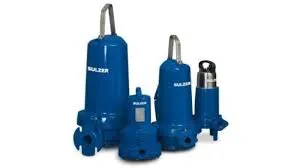English
- Afrikaans
- Albanian
- Amharic
- Arabic
- Armenian
- Azerbaijani
- Basque
- Belarusian
- Bengali
- Bosnian
- Bulgarian
- Catalan
- Cebuano
- Corsican
- Croatian
- Czech
- Danish
- Dutch
- English
- Esperanto
- Estonian
- Finnish
- French
- Frisian
- Galician
- Georgian
- German
- Greek
- Gujarati
- Haitian Creole
- hausa
- hawaiian
- Hebrew
- Hindi
- Miao
- Hungarian
- Icelandic
- igbo
- Indonesian
- irish
- Italian
- Japanese
- Javanese
- Kannada
- kazakh
- Khmer
- Rwandese
- Korean
- Kurdish
- Kyrgyz
- Lao
- Latin
- Latvian
- Lithuanian
- Luxembourgish
- Macedonian
- Malgashi
- Malay
- Malayalam
- Maltese
- Maori
- Marathi
- Mongolian
- Myanmar
- Nepali
- Norwegian
- Norwegian
- Occitan
- Pashto
- Persian
- Polish
- Portuguese
- Punjabi
- Romanian
- Russian
- Samoan
- Scottish Gaelic
- Serbian
- Sesotho
- Shona
- Sindhi
- Sinhala
- Slovak
- Slovenian
- Somali
- Spanish
- Sundanese
- Swahili
- Swedish
- Tagalog
- Tajik
- Tamil
- Tatar
- Telugu
- Thai
- Turkish
- Turkmen
- Ukrainian
- Urdu
- Uighur
- Uzbek
- Vietnamese
- Welsh
- Bantu
- Yiddish
- Yoruba
- Zulu
Telephone: +86 13120555503
Email: frank@cypump.com
Dec . 02, 2024 08:02 Back to list
Innovative Approaches to Efficient Slurry Pumping and Handling Solutions for Various Industries
Comprehensive Solutions for Slurry Pumping
In various industrial operations, the efficient handling of slurry is a critical concern. Slurry, a mixture of solids and liquids, poses unique challenges that demand specialized solutions to ensure optimal performance and operational safety. From mining to construction, the need for reliable slurry pumping systems is paramount. This article explores comprehensive solutions for slurry pumping, focusing on the importance of technology, equipment selection, and operational strategies.
Understanding Slurry Characteristics
To effectively manage slurry pumping, it is essential to comprehend the physical and chemical properties of the material being transported. Slurries can vary significantly in viscosity, particle size, and chemical composition, all of which influence the selection of pumping equipment. For instance, highly abrasive slurries, commonly found in mining operations, may require robust pumps made from wear-resistant materials. Conversely, slurries with high solid content might necessitate different pumping strategies to prevent blockages and maintain flow rates.
Advanced Pumping Technologies
The slurry pumping industry has seen significant advancements in technology over the years, leading to the development of high-performance pumps that can handle diverse slurry types. Centrifugal pumps, diaphragm pumps, and positive displacement pumps are among the most widely used types, each offering unique advantages depending on the application.
Centrifugal pumps, known for their ability to handle low-viscosity slurries, are often preferred for applications where high flow rates are essential. Innovations in design, such as the use of clearances and impeller geometries optimized for slurry transport, enhance their efficiency and durability.
On the other hand, diaphragm pumps are highly effective for transferring high-viscosity slurries and those containing larger solids. They operate by utilizing air pressure to push the diaphragm, creating a vacuum that draws in the slurry and then pushes it out. This results in less wear and tear on the pump components, thus extending service life and reducing maintenance costs.
comprehensive solutions for slurry pumping and ...

Equipment Selection and Maintenance
Selecting the right pumping equipment is vital for the successful management of slurry transport. Key factors to consider include the nature of the slurry, the required flow rate, and the distance of transportation. Collaboration with experienced equipment suppliers can provide insights into the best options tailored to specific needs.
Beyond selection, regular maintenance of slurry pumps is crucial in preventing breakdowns and prolonging equipment lifespan. Establishing a proactive maintenance schedule that includes routine inspections, cleaning, and part replacements ensures optimal performance and mitigates the risk of operational disruptions.
Operational Strategies
In addition to selecting appropriate equipment and technologies, developing effective operational strategies is essential for efficient slurry pumping. Training personnel on proper handling techniques, monitoring pump performance, and employing advanced control systems can optimize operations.
Furthermore, implementing real-time monitoring solutions that provide data on flow rates, pressure levels, and wear patterns can proactively identify potential issues before they escalate. This data-driven approach allows operators to make informed decisions, improving overall efficiency and reducing operational costs.
Conclusion
The management of slurry pumping presents significant challenges across various industries, from mining to wastewater management. By understanding the properties of slurry, leveraging advanced technologies, selecting the right equipment, and employing strategic operational practices, businesses can achieve comprehensive solutions that enhance efficiency, reduce costs, and ensure safe operations. As the industry continues to evolve, the integration of innovation and maintenance excellence will be key to overcoming the complexities of slurry transport and maintaining a competitive edge.
-
Horizontal Split Case Pump with GPT-4 Turbo | High Efficiency
NewsAug.01,2025
-
ISG Series Pipeline Pump - Chi Yuan Pumps | High Efficiency, Durable Design
NewsAug.01,2025
-
Advanced Flue Gas Desulfurization Pump with GPT-4 Turbo | Durable & Efficient
NewsJul.31,2025
-
ISG Series Vertical Pipeline Pump - Chi Yuan Pumps | Advanced Hydraulic Design&Durable Construction
NewsJul.31,2025
-
ISG Series Vertical Pipeline Pump - Chi Yuan Pumps | Energy Efficient & Low Noise
NewsJul.31,2025
-
pipeline pump - Chi Yuan Pumps Co., LTD.|High Efficiency&Low Noise
NewsJul.31,2025










